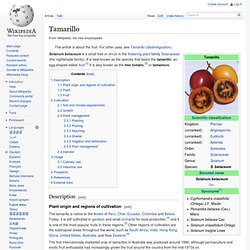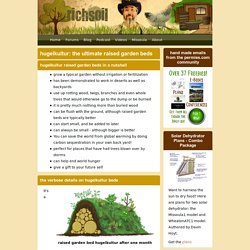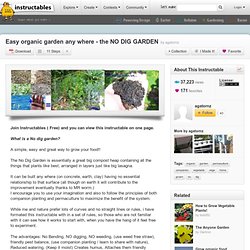

Cultivation. Vegetable Equipment Considerations for New Organic Farmers: Cultivation Sara Runkel, The Seed Farm New Farmer Training and Farm Incubator Tianna DuPont, Penn State Extension, www.extension.psu.edu/start-farming Equipment is expensive.

But often it can pay for itself quickly if you get the right piece for your farm. We would like to share a few considerations and tips we have learned through a recent equipment demonstration at the Seed Farm New Farmer Training and Incubator Program in Emmaus, PA as well as from our wonderful farmer neighbors and a few good resources.
While hoes have been around since pre-dynastic Egypt there are many types out there. No matter which hoe you use it is important to think about ergonomics. There are many types of cultivators out there. We currently are using two cultivators at the farm: a Low Residue Cultivator (from I&J) and the Williams Tools System with side knives and tines. References and Resources: [1] Bowman, G., ed. . [2] Grubinger, V. Tamarillo. Solanum betaceum is a small tree or shrub in the flowering plant family Solanaceae (the nightshade family).

It is best known as the species that bears the tamarillo, an egg-shaped edible fruit.[2] It is also known as the tree tomato,[3] or tamamoro. Description[edit] Plant origin and regions of cultivation[edit] The tamarillo is native to the Andes of Peru, Chile, Ecuador, Colombia and Bolivia. Today, it is still cultivated in gardens and small orchards for local production,[4] and it is one of the most popular fruits in these regions.[5] Other regions of cultivation are the subtropical areas throughout the world, such as South Africa, India, Hong Kong, China, United States, Australia, and New Zealand.[4] The first internationally marketed crop of tamarillos in Australia was produced around 1996, although permaculture and exotic fruit enthusiasts had increasingly grown the fruit around the country from the mid-1970s on. Plant[edit] Flower cluster Fruit[edit] Raised garden beds: hugelkultur instead of irrigation. Raised garden bed hugelkultur after one month raised garden bed hugelkultur after one year raised garden bed hugelkultur after two years raised garden bed hugelkultur after twenty years It's a german word and some people can say it all german-ish.

I'm an american doofus, so I say "hoogle culture". I learned this high-falootin word at my permaculture training. Hugelkultur is nothing more than making raised garden beds filled with rotten wood. I do think there are some considerations to keep in mind. Another thing to keep in mind is that wood is high in carbon and will consume nitrogen to do the compost thing. Pine and fir will have some levels of tanins in them, but I'm guessing that most of that will be gone when the wood has been dead for a few years. In the drawings at right, the artist is trying to show that while the wood decomposes and shrinks, the leaves, duff and accumulating organic matter from above will take it's place. Easy organic garden any where - the NO DIG GARDEN. Join Instructables ( Free) and you can view this instructable on one page.

What is a No dig garden? A simple, easy and great way to grow your food!! The No Dig Garden is essentially a great big compost heap containing all the things that plants like best, arranged in layers just like big lasagna. It can be built any where (on concrete, earth, clay) having no essential relationship to that surface (all though on earth it will contribute to the improvement eventually thanks to MR worm.)
Plantes jardin champs prairies bois forêt. Culture sur butte et autres techniques.